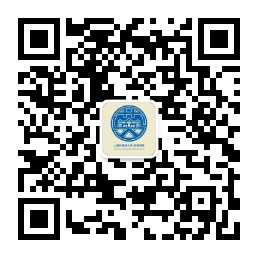英语学院院庆60周年系列活动
“英华人文系列讲座”第85讲
讲座题目:
1.Same stimuli, same subjects, different perception: Believed dialect bias in the perception of Chinese plosives
2.Phonetic and phonological activities of the non-dominant hand
主讲人:
1.Marjoleine Sloos(Royal Netherlands Academy of Sciences)
2.Onno Crasborn (Radboud University Nijmegen, Centre for Language Studies)
时间:2016年10月28日(周五)17:30—20:30
地点:虹口校区英伦厅
举办单位:英语学院
内容简介
1. Speech sound perception is influenced by higher order knowledge and believes about the language variety one is listening to. This holds for linguistically naïve and linguistically trained listeners. In a matched-guise experiment, we investigated the perception of voiced stops [b d ɡ] and plain voiceless stops [p t k] in Chinese and whether linguistically trained subjects were biased toward the information regarding the variety they were listening to: Wu or Mandarin dialect. Wu dialects have breathy consonants but Mandarin dialects do not. In reality they listened to the same stimuli twice.
It turned out that neither native Mandarin nor native Wu subjects were able to correctly perceive the voicing contrast. Wu listeners mainly relied on tone to distinguish the voicing contrast—since voicing always co-occur with low register tones. Mandarin subjects relied on tone as well as the information that the dialect was either Wu or Mandarin. They reported more voiced consonants if they believed they were listening to Wu.
2. During a substantial part of signed interaction, the non-dominant hand is not active in articulating new lexical information: one-handed signs constitute about half of the lexicon in many sign languages, and in signed interaction one-handed signs are used for more than half of the time. A variety of linguistic activities is performed by the non-dominant hand during that time, while being held steady in space: from the prosodic spreading analysed by Sandler and others to discourse markers (buoys) described by Liddell and colleagues. Each of these functions can be clearly linked to the grammar of the language. The present study aims to find out what the non-dominant hand does the rest of the time. Investigating data from the Corpus NGT (Sign Language of the Netherlands), different types of activity were found other than ‘full rest on the lap’. In this presentation, I will discuss both spreading of individual phonological features overneighbouring signs and ‘echoing’ movements, where the non-dominant hand copies features of the dominant hand.
主讲人:
1. Marjoleine Sloos PhD is postdoctoral researcher at the Fryske Akademy (Royal Netherlands Academy of Sciences). Her research interests are phonology, socio-phonetics, and bilingualism. Recently she was awarded a prestigious grant by the Netherlands Organisation for Research that enables her carry out her research project on the phonology of bilingual Dutch-Frisian speakers.
Marjoleine Sloos graduated on phonological modelling at Groningen University in 2013. Subsequently she received a grant for her research on perceptual bias among linguistic researchers from the Danish Organization for Fundamental Research. She regularly visits Shanghai, as a guest assistant professor at Tongji University in 2013, and as the organizer of the annual workshop “Chinese Accents and Accented Chinese” at Fudan University.
2. Dr. Onno Crasborn obtained his doctoral degree on sign language phonetics and phonology from Leiden University in the Netherlands in 2001. He presently works as associate professor in the Linguistics Department of Radboud University Nijmegen, and chairs the Sign Language Linguistics research group of the Centre for Language Studies of the Faculty of Arts. In the last ten years, he has lead a number of research projects on Sign Language of the Netherlands (NGT), all exploiting the Corpus NGT, the first large open access corpus of a signed language in the world, which he published in 2008. The linguistic research projects have focused primarily on the use of simultaneous articulators (two hands, mouth) in Sign Language of the Netherlands at every linguistic level, from phonetics to discourse. In parallel, he has been actively promoting standardisation of methodologies in creating and exploiting sign language corpora, collaborating with a large number of research groups in the world. This has involved continuous investments in the ELAN annotation tool, most recently in collaboration with the University of Connecticut and Gallaudet University. In 2004 he was one of the co-founders of the Sign Language Linguistics Society, serving as a board member until 2013.


